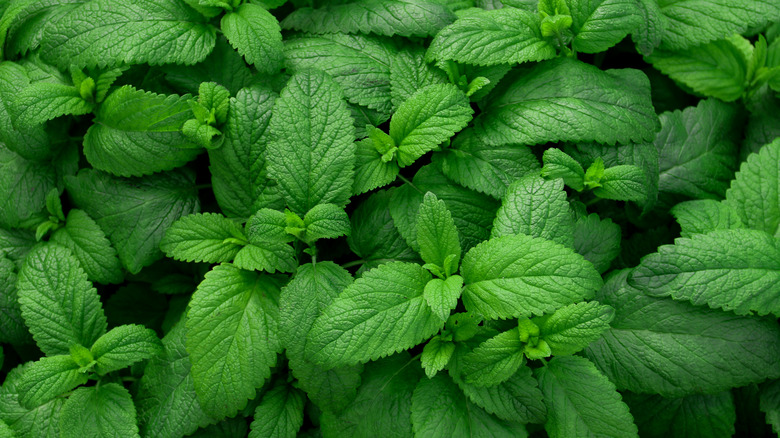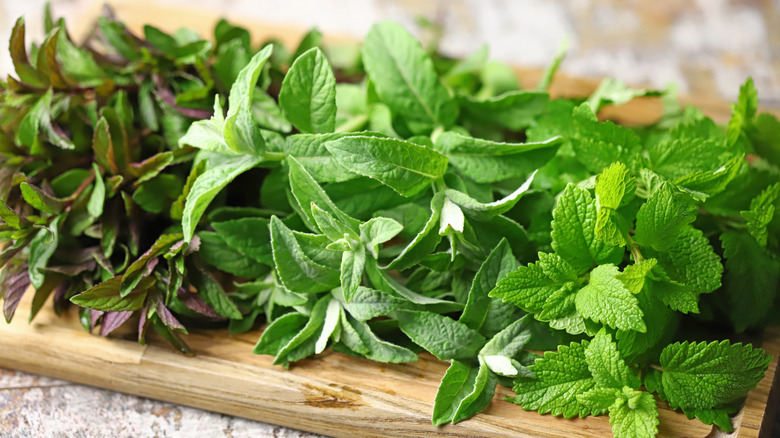Why You Should Stop Throwing Out Mint Stems
Herb stems get a bad rap. Often discarded, they're looked over in favor of their leafy counterparts. However, you can actually use herb stalks in a multitude of ways. Per The Kitchn, you can chop, muddle, blend, grill, and infuse with them — among other methods. Essentially, stems tend to function similarly to leaves; they act as extensions of an herb's trademark flavor.
Yet while stems are generally worth incorporating into your cooking, each herb follows its own rules. Mint — the popular herb of which peppermint is only one variety — has special uses. A common ingredient in teas, desserts, and cocktails, mint is a favorite herb for many. Keep mint fresh by storing it carefully, either dried, frozen, or in your fridge.
When it comes time to using your mint, consider utilizing all parts of the herb. While mint leaves tend to look pretty as a garnish, the stems have plenty of their own uses. Discarding them would be a waste of potential flavor.
Mint stems extend the herb's flavor
According to America's Test Kitchen, mint stems retain the strong mint flavor you recognize from the herb's leaves. If you're making something that requires pulverizing or straining, throw the stems in; they work well in dishes that call for mint. When torn apart, the texture of the stems doesn't matter; you likely won't be able to tell whether you're tasting stalks or leaves if they've been pulverized. However, if your dish asks you to keep your mint as is for a garnish or mix-in, forgo the stems, as they have a distinct, fibrous texture.
Incorporating mint stalks into dishes clearly requires some trial and error. When in doubt, hold onto those stems and integrate them as needed. Preserving all parts of the herb means you'll have all the more mint accessible for the next time you're craving a cocktail. Think of all the mojitos you can make if you hang onto mint leaves AND stems.

